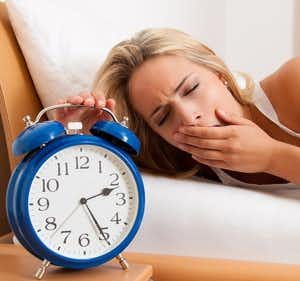
Insomniacs are caught in a classic double bind. On the one hand, they are told that the consequences of chronic sleep deprivation include hypertension, heart failure, obesity, depression, cognitive dysfunction, diabetes and an increased risk of accidents.
They are also warned that taking sleeping pills can cause mental fuzziness, memory problems, incoordination and driving dangers. Concern has been raised that regular use of old-fashioned benzodiazepine sleep aids such as alprazolam, clonazepam or diazepam may increase the risk of dementia in older people (BMJ, Sept. 27, 2012). Other research suggests that the popular Z-drugs (zaleplon, zolpidem, eszopiclone) may increase the possibility of premature death (BMJ Open, Feb. 27, 2012).
Needless to say, such scary messages leave people with insomnia torn between the dilemma of tossing and turning all night or popping pills that could have deleterious side effects over the long term.
Ambien (zolpidem) and Sleep Eating & Sleep Driving
Some readers have had frightening experiences with their sleeping pills. One woman related: “I was taking Ambien and complained to my husband that I was not losing any weight on my new diet. He said, ‘No wonder: every night you come downstairs and eat a peanut butter sandwich!’ I had no idea.
“When I mentioned this to my doctor, he changed my prescription. He told me I was sleep-walking and I could easily fall down the stairs.”
Another women wrote: “I have been dealing with insomnia for most of my life, and it got worse as I got older. When my doctor prescribed Ambien, it seemed like a miracle drug! I could actually get to sleep.
“I worried when I found that eventually I couldn’t get to sleep without it. Then my friends started commenting on the odd emails I sent in the middle of the night. The worst happened when I crashed my car. I hadn’t even realized I was driving.
“I remember having dinner, taking Ambien and settling down to watch a movie before bed. The next thing I knew I was sitting in a small room at the police station with handcuffs on. I woke up to a police report stating I’d been charged with DUI and negligent driving.”
In Praise of Ambien
Other readers are adamant that the drug is a godsend. One person reports: “I am very concerned about all the negative comments about Ambien. For me it has been a lifesaver and I have no noticeable side effects from it.
“For 20 years, I have suffered from fibromyalgia. About seven years ago, my doctor prescribed amitriptyline. It allowed me to sleep but I felt like a zombie during the day. Then it quit working and actually caused acute anxiety attacks.
“When I was prescribed Ambien, it gave me the most refreshing sleep I’ve had since contracting this disease. If they ever take Ambien off the market, I will probably never sleep. What in the world should I do then?”
A number of non-drug approaches can be quite helpful.
Kidney Bean for Insomnia
One of the strangest and safest remedies we have ever heard of for insomnia involves a dried kidney bean placed over an acupressure point called the “Inner Gate.” Here is just one story we have collected regarding this approach using a “toggle button” instead of a kidney bean.
“My fibromyalgia causes me chronic pain, which makes it very hard to sleep. If I can get to sleep at all, I’ll wake every hour, go to the bathroom and just maybe drop off to sleep before I have to get up again.
“You cannot fathom the impact of your simple suggestion about applying kidney bean pressure to the sleep acupressure point in the wrist. I devised a wristlet by cutting a piece from an Ace bandage to go around my wrist twice. I closed the ends, forming a doubled circle, and in between the layers, sewed a toggle button (a one-inch barrel shaped button with a metal eye in its center for sewing). This slips over my hand easily, and once the button is positioned over the acupressure point, it does not stray.
“This simple device puts me to sleep in a few short minutes and I do not wake more than twice during the night. Sleep is so essential to making fibromyalgia a livable condition.”
More details about this acupressure technique and many other nondrug approaches can be found in our Guide to Getting a Good Night’s Sleep. We offer details on herbs, supplements and relaxation tapes as well as a discussion of the pros and cons of various sleep medicines.

